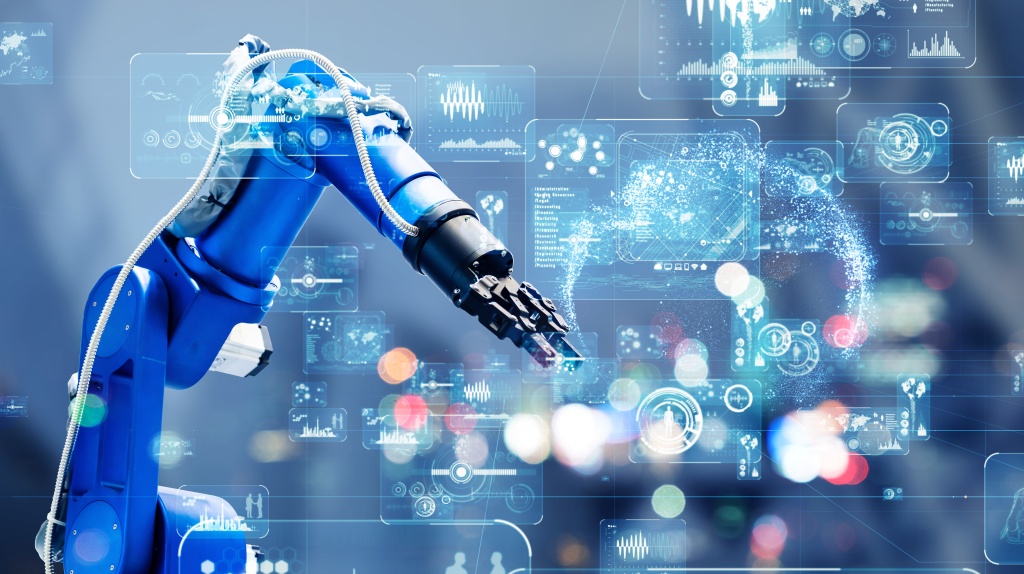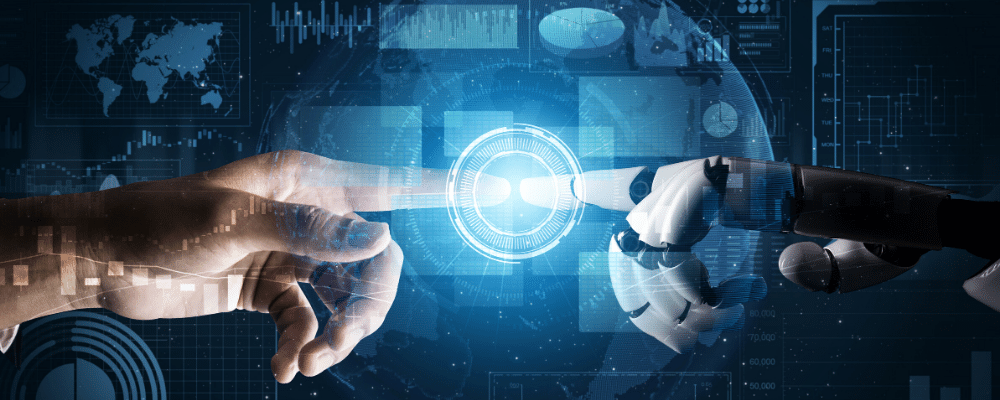Robotics is the intersection of science, engineering and technology that produces machines, called robots, that substitute for (or replicate) human actions. Pop culture has always been fascinated with robots. R2-D2. Optimus Prime. WALL-E. These over-exaggerated, humanoid concepts of robots usually seem like a caricature of the real thing…or are they more forward thinking than we realize? Robots are gaining intellectual and mechanical capabilities that don’t put the possibility of a R2-D2-like machine out of reach in the future.

As technology progresses, so too does the scope of what is considered robotics. In 2005, 90% of all robots could be found assembling cars in automotive factories. These robots consist mainly of mechanical arms tasked with welding or screwing on certain parts of a car. Today, we’re seeing an evolved and expanded definition of robotics that includes the development, creation and use of bots that explore Earth’s harshest conditions, robots that assist law-enforcement and even robots that assist in almost every facet of healthcare.
While the overall world of robotics is expanding, a robot has some consistent characteristics:
- Robots all consist of some sort of mechanical construction. The mechanical aspect of a robot helps it complete tasks in the environment for which it’s designed. For example, the Mars 2020 Rover’s wheels are individually motorized and made of titanium tubing that help it firmly grip the harsh terrain of the red planet.
- Robots need electrical components that control and power the machinery. Essentially, an electric current (a battery, for example) is needed to power a large majority of robots.
- Robots contain at least some level of computer programming. Without a set of code telling it what to do, a robot would just be another piece of simple machinery. Inserting a program into a robot gives it the ability to know when and how to carry out a task.
The robotics industry is still relatively young, but has already made amazing strides. From the deepest depths of our oceans to the highest heights of outer space, robots can be found performing tasks that humans couldn’t dream of achieving.
- 26 Robotics Companies Changing The Way We Live And Work
- How 12 Companies Are Using Artificial Intelligence To Make Smarter Robots
Types of Robots

Mechanical bots come in all shapes and sizes to efficiently carry out the task for which they are designed. From the 0.2 millimeter-long “RoboBee” to the 200 meter-long robotic shipping vessel “Vindskip,” robots are emerging to carry out tasks that humans simply can’t. Generally, there are five types of robots:
Pre-Programmed Robots
Pre-programmed robots operate in a controlled environment where they do simple, monotonous tasks. An example of a pre-programmed robot would be a mechanical arm on an automotive assembly line. The arm serves one function — to weld a door on, to insert a certain part into the engine, etc. — and it’s job is to perform that task longer, faster and more efficiently than a human.
Humanoid Robots
Humanoid robots are robots that look like and/or mimic human behavior. These robots usually perform human-like activities (like running, jumping and carrying objects), and are sometimes designed to look like us, even having human faces and expressions. Two of the most prominent examples of humanoid robots are Hanson Robotics’ Sophia (in the video above) and Boston Dynamics’ Atlas.
Autonomous Robots
Autonomous robots operate independently of human operators. These robots are usually designed to carry out tasks in open environments that do not require human supervision. An example of an autonomous robot would be the Roomba vacuum cleaner, which uses sensors to roam throughout a home freely.
Teleoperated Robots
Teleoperated robots are mechanical bots controlled by humans. These robots usually work in extreme geographical conditions, weather, circumstances, etc. Examples of teleoperated robots are the human-controlled submarines used to fix underwater pipe leaks during the BP oil spill or drones used to detect landmines on a battlefield.
Augmenting Robots
Augmenting robots either enhance current human capabilities or replace the capabilities a human may have lost. Some examples of augmenting robots are robotic prosthetic limbs or exoskeletons used to lift hefty weights.
APPLICATIONS OF ROBOTICS
- Helping fight forest fires
- Working alongside humans in manufacturing plants (known as co-bots)
- Robots that offer companionship to elderly individuals
- Surgical assistants
- Last-mile package and food order delivery
- Autonomous household robots that carry out tasks like vacuuming and mowing the grass
- Assisting with finding items and carrying them throughout warehouses
- Used during search-and-rescue missions after natural disasters
- Landmine detectors in war zones

ROBOTICS IS QUICKLY INFILTRATING EVERY ASPECT OUR LIVES, INCLUDING AT HOME.
Uses of Robots
Manufacturing
The manufacturing industry is probably the oldest and most well-known user of robots. These robots and co-bots (bots that work alongside humans) work to efficiently test and assemble products, like cars and industrial equipment. It’s estimated that there are more than three million industrial robots in use right now.
Logistics
Shipping, handling and quality control robots are becoming a must-have for most retailers and logistics companies. Because we now expect our packages arriving at blazing speeds, logistics companies employ robots in warehouses, and even on the road, to help maximize time efficiency. Right now, there are robots taking your items off the shelves, transporting them across the warehouse floor and packaging them. Additionally, a rise in last-mile robots (robots that will autonomously deliver your package to your door) ensure that you’ll have a face-to-metal-face encounter with a logistics bot in the near future.
Home
It’s not science fiction anymore. Robots can be seen all over our homes, helping with chores, reminding us of our schedules and even entertaining our kids. The most well-known example of home robots is the autonomous vacuum cleaner Roomba. Additionally, robots have now evolved to do everything from autonomously mowing grass to cleaning pools.
Travel
Is there anything more science fiction-like than autonomous vehicles? These self-driving cars are no longer just imagination. A combination of data science and robotics, self-driving vehicles are taking the world by storm. Automakers, like Tesla, Ford, Waymo, Volkswagen and BMW are all working on the next wave of travel that will let us sit back, relax and enjoy the ride. Rideshare companies Uber and Lyft are also developing autonomous rideshare vehicles that don’t require humans to operate the vehicle.
Healthcare
Robots have made enormous strides in the healthcare industry. These mechanical marvels have use in just about every aspect of healthcare, from robot-assisted surgeries to bots that help humans recover from injury in physical therapy. Examples of robots at work in healthcare are Toyota’s healthcare assistants, which help people regain the ability to walk, and “TUG,” a robot designed to autonomously stroll throughout a hospital and deliver everything from medicines to clean linens.

